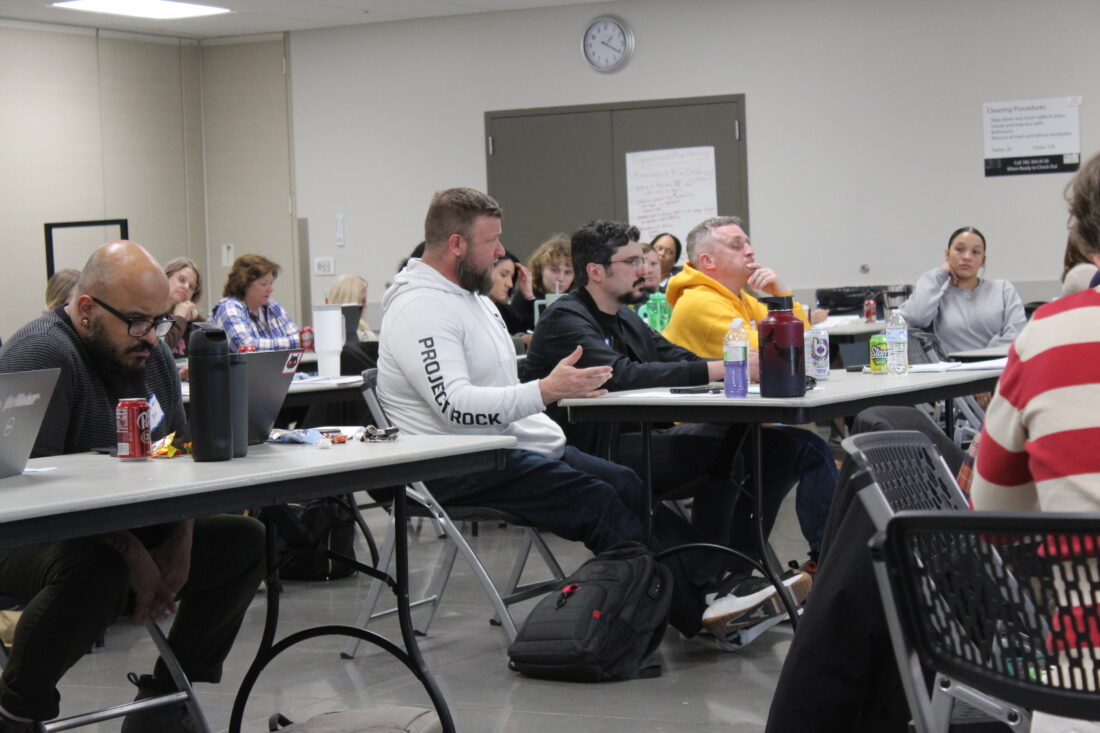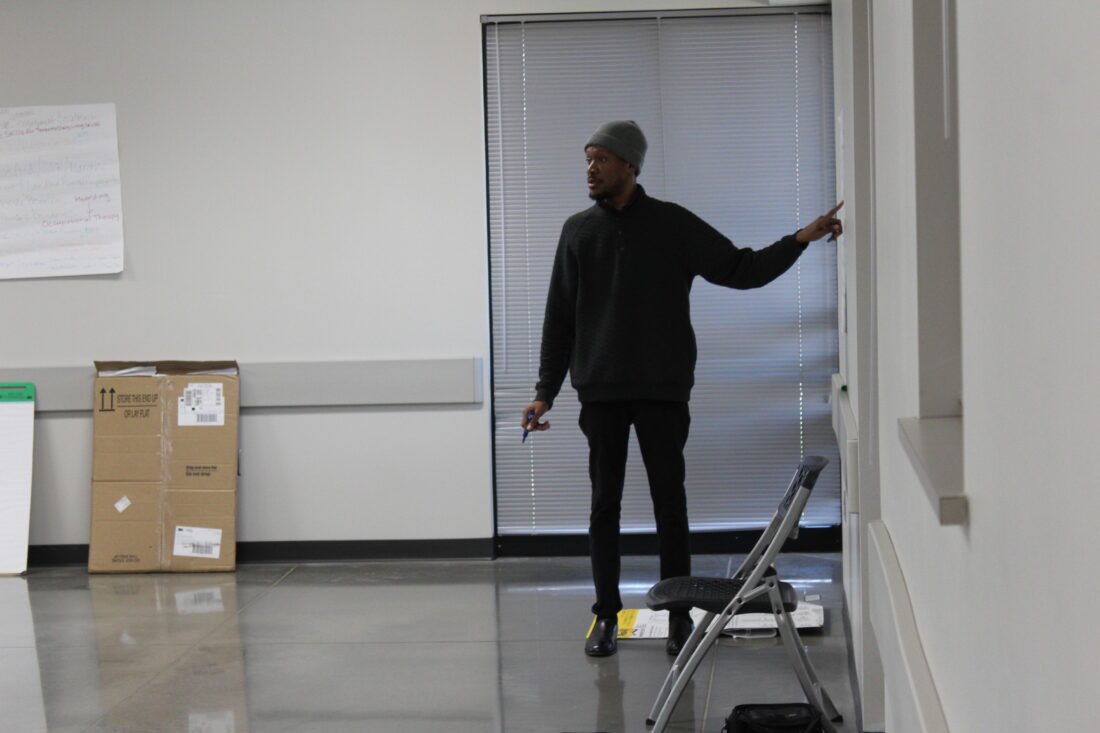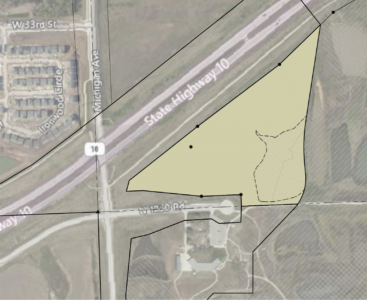Douglas County social service providers aim, with training, to develop shared supportive housing framework

photo by: Austin Hornbostel/Journal-World
Dozens of staff members working with housing-related service providers in Douglas County took part in supportive housing training sessions at the Douglas County Fairgrounds, which wrapped up Wednesday, March 21, 2024.
Dozens of staff members with local housing-related service providers gathered at the Douglas County Fairgrounds earlier this week with a common goal in mind: to develop a shared framework for supportive housing in Douglas County.
The group, which included representatives with agencies like the Lawrence-Douglas County Housing Authority, Artists Helping the Homeless, Tenants to Homeowners and the Ballard Center, learned more about how to effectively collaborate on that front from consultants with a national leader in the space, the Corporation for Supportive Housing. After Wednesday, consultants had guided the group through four days of training, including two sessions last month and two this week.
The Journal-World was invited to join the group Wednesday for a portion of the final training session, during which local agencies shared information about their housing retention and eviction prevention strategies and talked about how advancing racial equity in their workplaces could result in better work with clients.
All of those elements — and more — tie into the overarching concept of supportive housing, which combines affordable housing units with wrap-around support services that are often necessary, depending on individual needs, to keep people in stable housing.
County officials already have some familiarity with the CSH, as it’s the same organization that in 2022 conducted a needs assessment of supportive housing in the community. That assessment ultimately found that Douglas County needed an estimated 381 additional units of supportive housing, which would cost more than $100 million in capital, operating and service costs to bring online, according to a 10-year financial model.
That may be a daunting gap, but one of the training’s co-facilitators, Terri Power, told the Journal-World it’s exactly why she thinks her organization’s work is important.
“It is daunting, and if they knew how to do it, they probably would have been doing it,” said Power, who is the associate director of the CSH Ohio office and the program director of a supportive housing program serving Ohio’s population of people exiting prison. “I applaud the county for saying ‘We don’t have the expertise to move this forward, and we need someone from the outside to come in and help with this.’ They’re eager to learn, they want to know what best practices are, they want to do it right. There may be some different perspectives on how to get there, but that’s OK; that’s why you want a collaborative.”
What those agencies have been learning about how to “do it right” has included, for example, getting familiarized with their peers’ work and talking about various supportive housing models, as well as taking part in an exercise where they matched target populations that utilize supportive housing with the appropriate model. At a more recent training session on Tuesday, the group learned more about best practices for service providers and intervention options they ought to be equipped with.
What Power and co-facilitator Douglas Mackbee did not intend to do, however, was come in and tell Douglas County providers exactly how they should be working with each of their clients. Mackbee said that’s because every client is different, and the agencies that work with them know them best.
Instead, the training focused on facilitating collaborative conversations that introduced concepts other communities are using, with the goal of helping the group work toward a collaborative agreement that ensures agencies are working together to sustain supportive housing in Douglas County in the long term.

photo by: Austin Hornbostel/Journal-World
Dustin Moore, the Douglas County community manager for Artists Helping the Homeless, explains his agency’s recovery housing model to fellow participants in a supportive housing training at the Douglas County Fairgrounds Wednesday, March 20, 2024.
That collaboration isn’t just a necessary step in addressing the significant gap in supportive housing needs, Power said, but also in reducing homelessness as a whole. One leg of Lawrence and Douglas County’s collaborative plan to end chronic homelessness, “A Place for Everyone,” is specifically dedicated to supportive housing capacity.
Mackbee, a senior program manager and consultant for the CSH, agreed with Power on that front. Mackbee told the Journal-World he’s seen firsthand how social service agencies in the community he calls home — Minnesota’s Twin Cities — decided to turn toward better collaboration.

photo by: Austin Hornbostel/Journal-World
Douglas Mackbee, a senior program manager and consultant with the Corporation for Supportive Housing, facilitates a training session for staff members with Douglas County social service agencies at the Douglas County Fairgrounds Wednesday, March 20, 2024.
“I’m seeing a theme in communities in the Midwest and across the country where not everyone, but a lot of communities, are recognizing the need for us to pool our resources, better understand what our individual and collective work looks like so (that) collectively we can be of better service to the individuals that we are all serving in order to meet their needs and move toward solving the issue of homelessness,” Mackbee told the Journal-World.
The system around social service work poses the same challenges everywhere, not just in Douglas County. Mackbee said for him, that manifests in a dynamic in which multiple agencies in a community may be competing for services rather than working together, despite often sharing the same clients.
After three and a half days of training in Lawrence, both Mackbee and Power said they were impressed with what Douglas County agencies are bringing to the table. Mackbee said one theme that has emerged from the group is a collective desire to use data collection and storytelling to communicate to community members that their approach to supportive housing saves both financial resources and lives.
“This collaborative, I will tell you I have a lot of confidence that they will move this forward,” Power added. “They’re going to take the recommendations we’ve made and make it happen, and make it impactful. I’m pretty sure not every community will do that, but I’m confident this one will.”







COMMENTS